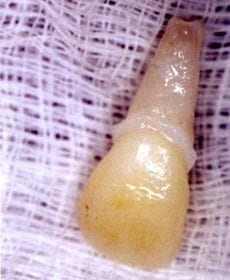Tooth Avulsion
Dental Trauma and Emergencies:
Teeth Avulsion:
- Teeth avulsion is a medical/dental emergency that require prompt recognition and treatment in the emergency department.
- Avulsed teeth are teeth which has be totally dislodge from the socket.
- Avulsion results in hypoxia and necrosis of the pulp of the tooth
- Reimplantation is the main goal of emergency care, to preserve the periodontal ligament attached to the roots.
Dental Anatomy:
Assessing Dental Injuries:
History:
- Mechanism of injuries including associated injuries
- Previous dental history, including previous injuries, crowns or prostheses
- Time since injury; avulsion of a permanent tooth is a dental emergency requiring urgent replacement into its socket, with prognosis is dependent on how swiftly the tooth is reimplanted.
- Location of permanent tooth fragments; suggest someone look for missing fragments or teeth at the site of injury.
Examination:
- Symmetry in the mouth
- Bite; check for malocclusion, subjective or objective
- TMJ’s
- Numbness, intra-or extra oral bruising
- Bony steps in maxilla or mandible
- Lift the lips to look for gingival or oral mucosal injury
- Type of tooth and whether permanent or primary
- Type of dental injury
- All lost teeth and fragments should be accounted for, including examining chest and soft tissues of mouth
Differentiating between primary and permanent teeth:
- Primary teeth: small, very white, bulbous crowns, often worn, flat edges
- Permanent teeth: larger, creamier in colour, jagged edges on newly erupted teeth. Permanent incisors usually erupt sometime between the ages of 6 and 8 years.
Investigations:
- OPG (Orthopantogram) if considering fractured mandible, or TMJ injury
- CXR: if suspicious of aspirated tooth or unconscious trauma patient
Management of the avulsed tooth:
- Reinsertion is best done within a few hours of injury.
- The tooth should be cleaned with saline, then place into storage medium. Avoid touching the root surface. The socket should be packed with sterile gauze.
- Storage medium is more important than time out of mouth.
- Milk is the preferred storage medium, flavoured milk has no use, and tooth should be kept in milk for transport with ice pack around the milk if possible. Saline/saliva can also be used if milk is not available.
- Don’t get the patient to hold the tooth in the buccal pouch, milk has been shown to be just as effective, and some patients have ended up swallowing the tooth.
- The socket should be irrigated with saline, and local anaesthetic can be used to provide analgesia, before reinserting the tooth.
- Once the tooth has been reinserted, it needs to be splinted in place, while awaiting definitive management. Splinting can be achieved by molding Blu-tac or aluminum foil around the tooth to hold in place.
- Advise patient not to eat or drink anything hot or cold, until definitive care.
- Early and prompt referral to dental surgeon or maxillary facial surgeon
Reference
- Doshi, D. & Hogg, K. (2009). Avulsed tooth brought in milk for replantation. BestBETs
Emergency nurse with ultra-keen interest in the realms of toxicology, sepsis, eLearning and the management of critical care in the Emergency Department | LinkedIn |




